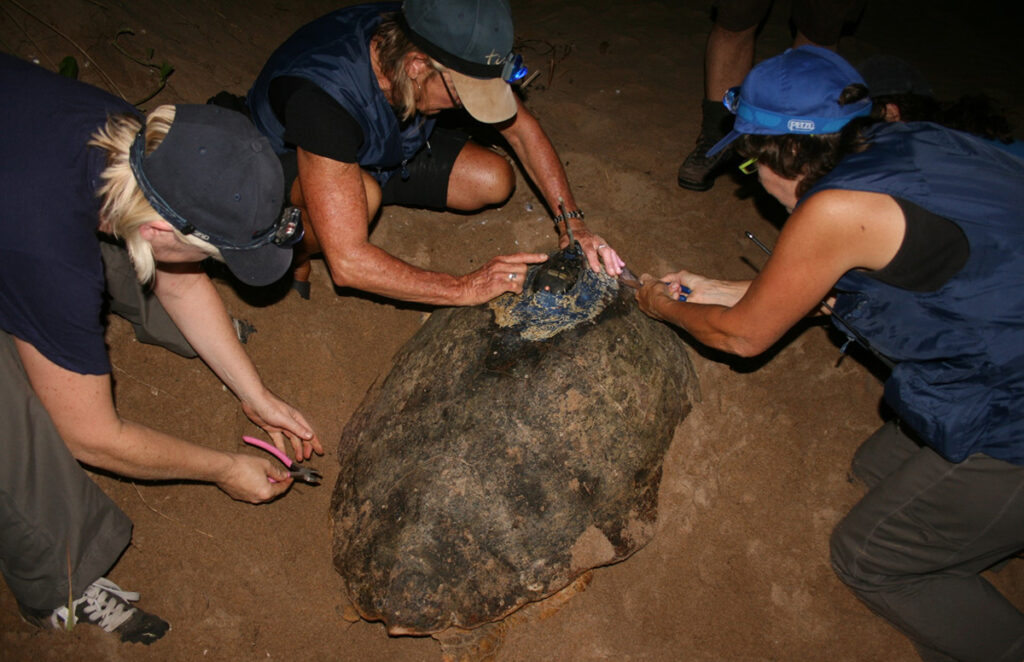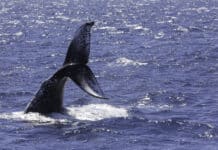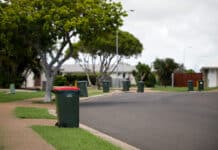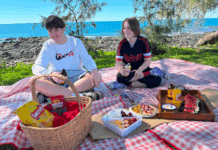
Moore Park Beach Turtle Monitoring Group volunteers are actively patrolling the beach and helping to improve the survival rate of eggs and hatchlings.
Burnett Mary Regional Group is supporting their efforts through the Nest to Ocean Turtle Protection Program with funding from the Australian Government’s Reef Trust and the Queensland Government’s Queensland Reef Water Quality Program.
The Moore Park Beach volunteers undertake surveys at first light over 8.5 km of beach, collecting turtle activity data and relocating nests which appear vulnerable to tides, predators or vehicles.
They also patrol sections of the beach at night.
Their data collection includes species identification, health and general condition of the turtles, tag number recoveries, tagging of new turtles, measurements and photographs.
BMRG project officer Mauricio Montoya said the group’s efforts were much appreciated.
“The Nest to Ocean program is a very practical way in which the community can be active in assisting native wildlife,” he said.
“The volunteers do a fantastic job and they’re to be commended for everything they do.
“They’re turtley awesome!”
Moore Park Beach Turtle Monitoring Group spokesperson Judi Giarola said the volunteers were also involved with community education.
“We attend the local school and Scouts to teach them about our turtles, their endangered status and let them know what they can do to help,” she said.
“These educational talks are very successful.
“In addition to monitoring, data collection and patrols, we also check for predation and take precautions to avoid potential predation.”
Bundaberg Regional Council and the Queensland Parks and Wildlife Service provided materials and installed a stainless steel protective nursery cage in January 2019.
The structure is designed to keep out predators such as goannas, foxes, domestic dogs and to protect the egg clutches from interference.
“Goannas appear to have a territory and at their first encounter with an aluminium mesh covered nest they dig extensively to try and access the eggs,” Judi said.
“Subsequent goanna investigations at the same nest were always small digs to the mesh and then to move.
“This was observed on an almost daily basis at the meshed nests in the Reserve.”
Up to 12 February, there have been 121 recorded turtle activities in the ‘walked’ area plus another 29 in the Conservation Park near the Kolan River.
Volunteers have located and recorded 65 nests comprised of 53 loggerheads, nine flatbacks and three greens, and almost 80 per cent of the nests have been relocated.
Nineteen vulnerable nests have been covered with aluminium mesh to reduce predation.
Judi said the numbers compared to seasons up to 2021-2022 were, unfortunately, significantly down but an improvement on the past two seasons.
Challenges at Moore Park Beach include significant erosion after Cyclone Hamish in 2009 and urban glow from a growing population.
“There has been a very positive outcome to restrictions of vehicles on the beach at night time with a high percentage of nests now being laid in the non-residential areas,” Judi said.







